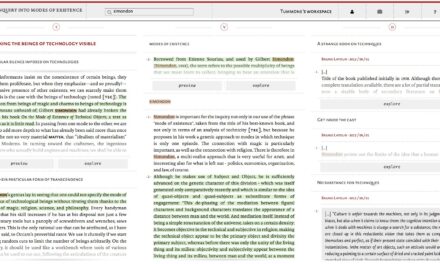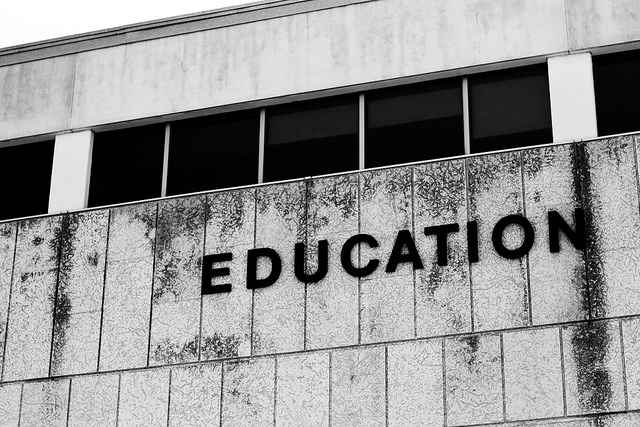Amidst COVID-19 outbreak, I was fortunate to prepone my ticket and go back to my family in India before the international boarders were restricted. But the minute I landed, I received a message from the Chief Academic Officer of Learning Wings Education Systems, where I used to work saying that we have to move to online teaching and learning by the start of April. This was before the Prime Minister of India declared 21 day lockdown which has now been extended until 17th May. This blogpost is about my reflections of working with teachers of seven private schools across Punjab for online teaching and learning and how Bourdieu’s thinking tools have helped me in making sense of teachers’ practices in the context of a global health crisis.
Context
Understanding the context of the schools I have been working with here in India is important. All the seven schools are private schools in the region of Punjab, India. For those not acquainted with India’s school system, private schools in India are different from the private schools in the West. In fact, in the span of 2010 to 2015, there were about 71,360 new private schools with a rise of 16 million students enrolling into private education (Kingdon, 2017). The rise of private schools has been substantial, from 10% in 1996, to 43.18% in 2016-2017 (Central Square Foundation, 2020). Private schools in India have variations in their fee structures depending on the spatial contexts. For instance, private schools in rural areas are budget private schools which cater to working class children with the average fee being lower than minimum daily wage worker (Kingdon, 2017). There are also private schools – especially in urban areas – that cater to middle class children and there are also private schools that are considered only for the elites. Within the private school system in India there are alterative teaching schools, international schools and religious schools (Shah, 2018)-offering access and differentiated demand needs (Tilak & Sudarshan, 2001). When given a chance, parents prefer to send their children to private schools because they have better infrastructural resources, basic utilities and computer aided resources compared to public schools (Dubey et al., 2009; French & Kingdon, 2010; Gouda, Das, Goli, & Pou, 2013). Another important reason for choosing private schools over public ones is related to the fact that most private schools have English as the medium of communication (James & Woodhead, 2014), giving higher social status, -cultural capital – to pupils which ultimately is expected to be translated into economic capital through job opportunities and social mobility.
The schools where I have been working are spread across both rural and urban areas of Punjab and were reasonably equipped with technology. These schools were already using SchoolPad app to communicate with parents and students, sharing notices and activities on a day to day basis. Some of the schools were also using Google Classrooms as a Learning Management System with senior students (9th till 12th grades).
Teachers’ Digital Online Practices
Before the official start of the session with students, I provided training to the teachers regarding the technicalities of digital platform such as Zoom and the participatory features of the web that provide opportunities for engagement, creativity, collaboration and participation. However, the first training session majorly focused on the basic technical skills with an aim to motivate teachers to “play” with the different tools available online with a key focus on lesson planning. The different strategies of teaching online were also discussed. The teachers were given full autonomy to plan their lessons in whichever way they were comfortable. The reason for that was as the field of their teaching practices was changing- and the new rules of the new field-the digital- were not familiar to the teachers as yet – I felt it was important for them to get familiar with it.
The typical online class was planned (especially in the initial weeks) in a way that would also familiarise students with digital teaching and learning. Most primary teachers came up with their lesson plans that usually started with a prayer, showing a video of few breathing exercises, engaging activities for students as well as parents in junior grades (Kindergarten and 1st till 5th grades). This approach along with the addition of few subject classes (English, Mathematics, Science, Social Studies) were taken up from grades 6th to 8th. On the other hand, teachers teaching senior years, especially 9th to 12th, took on the approach to show PowerPoint slides or use e-books using the ePaathshala resources (online e-resource, initiative of Digital India Campaign), to cover curriculum topics that were supposed to be studied under normal circumstances.
The lesson plans matured with time and started to focus more on key digital education principles of the participatory web (Jenkins, 2006). Teachers prepared puppet show to raise students’ awareness of COVID-19, researched different art and craft activities to engage students even after the online class and many students were also asked to create and share various digital artefacts with those activities and were posted on social media. With students’ engagement and motivation along with the parents’ feedback, the whole experience resulted in what literature suggests the web to be for in the context of education: to encourage individuals to engage in a participatory culture rather than becoming mere recipients of passive lesson delivery (Costa and Harris, 2017). However, this was only visible in the teaching of school years that had no externalised pressures such as senior year exams. In senior year classes, digital education is still perceived through a perspective that aims to replicate classroom teaching. Applying, Bourdieu’s field theory here, it could be said that the rapid change the field of education had to go through to respond to social distancing measures as imposed by COVID-19, changed the location of teaching – to online settings- but has been less effective in changing the teaching habitus. This is particularly visible when the stakes are higher. Senior grade students are still expected to complete their exams with teachers compelled to get students through the syllabus on time to achieve such purpose. The responsibility on teachers’ shoulders – and the perception of risk associated with trying out something new – seems to prevent them from innovating or changing directions as they become stuck between two crisis – that of getting students through their studies using tried and tested teaching methods or of providing more enlightening solutions to teaching and learning in light to the current digital arrangements. The misalignment of an educational field gone digital and a teaching habitus (Bourdieu, 1977) that embodies a set of established practices leads to uncertainty on how to act. And in case of doubt, teachers seem to default to what they know, to the established habitus that works here as a form of ‘insurance’. As the old saying goes, the practices become old wine in new bottles.
On the other hand, however, the same digital teaching spaces seemed to provide teachers of junior classes (kindergarten to 8th) with the autonomy to plan their lessons, in Bourdieu’s words, the agency to act independently (Campbell, 2009) with no externalised pressure, for instance, to start or finish the curriculum, the pressure of exams looming, etc. These teachers allowed themselves the freedom to explore digital environments and develop different ways to plan their online lessons. This further resulted in creative engaging lesson delivery among students. The digital field as a structuring structure seems to have influenced the embodied teaching practices of the teachers of junior classes in that these teachers engage with new pedagogical concepts to create lessons which they thought were appropriate during the time of this pandemic, but which do not necessarily resemble their common practice The pandemic may have prevented teachers from doing what they usually did, but these teachers did what they could to keep education going, changing the feel of the game-to sensing how to act (Bourdieu, 1984, p. 466) anew. So, we can ask ourselves here: why did teachers teaching different years took on so different positions? The risk of uncertainty of the new digital field as felt by senior year teachers was not present in teachers of junior grades who intrinsically modified their practices as a form of ‘tactical improvisation’ (Bunn, 2016). While for junior teachers the digital offers new opportunities, for teachers of senior years it presents risk, risks that are associated with the fixed structures of assessment over which they have little or no control, but which they aim to navigate the best way they know how. Hence, replicating what they normally do, i.e. transferring the doxa of face to face teaching to online gives them a feeling of reassurance, which is most likely also shared by parents and students who are reliant on exams to move to the next stage of education. In this context, risk can thus be regarded as a great inhibitor of practice change, in that it does not allow teachers’ habitus to fully grasp the rules of a new learning field, that of the digital.
Final thoughts
What I have learned from working digitally with these teachers for over a month now is that applying Bourdieu’s theory gave a deeper understanding of their digital practices within a new field – online teaching. The teachers who had less structural pressures led more diversified teaching practices whereas the teachers whose students needed to graduate perceived the digital space as risky, leading them to follow their old, embodied dispositions. This explains how the rules of the game-which have gone unquestioned, i.e., become doxified- were read and understood by those who hold stakes in the fields they operate. This was particularly true for senior year teachers whose role/practice was intrinsically linked to exam success. Junior year teachers, on the other hand, were free of such pressures, and so found in digital education a renewed autonomy to create their own lessons using whatever resources they were comfortable in, resulting in increased student engagement and creative artefacts.
References
- Aguilar, B. H., & Rivera, N. R. (2016). The production of vulnerability to landslides: the risk habitus in two landslide-prone neighborhoods in Teziutlán, Mexico. Investigaciones Geográficas, Boletín del Instituto de Geografía, 2016(90), 7-27.
- Bourdieu, P. (1977). Outline of a Theory of Practice (Vol. 16). Cambridge university press.
- Bourdieu, P. (2011). The forms of capital.(1986). Cultural theory: An anthology, 1, 81-93.
- Bunn, M. (2017). A disposition of risk: Climbing practice, reflexive modernity and the habitus. Journal of Sociology, 53(1), 3-17.
- Campbell, C. (2009). Distinguishing the power of agency from agentic power: A note on Weber and the “black box” of personal agency. Sociological Theory, 27(4), 407-418.
- Central Square Foundation (2020), Private Schools. Central Square Foundation. Accessed at https://www.centralsquarefoundation.org/private-schools/
- Costa, C., & Harris, L. (2017). Reconsidering the technologies of intellectual inquiry in curriculum design. The Curriculum Journal, 28(4), 559–577.https://doi.org/10.1080/09585176.2017.1308260
- Dubey, A., Vanneman, R., & Banerji, R. (2009). Private schooling in India: A new educational landscape. In India Policy Forum 2008-09 (Vol. 5, p. 1). SAGE Publications India.
- French, R., & Kingdon, G. (2010). The relative effectiveness of private and government schools in Rural India: Evidence from ASER data. London: Institute of Education.
- Giridhar. S (2019) Why we need government schools: They are the only educational lifeline for 60% of India’s children An excerpt from ‘Ordinary People, Extraordinary Teachers: The Heroes Of Real India’. Scroll.in Accessed at https://scroll.in/article/948977/why-we-need-government-schools-they-are-the-only-educational-lifeline-for-60-of-indias-children
- Gouda, J., Das, K. C., Goli, S., & Pou, L. M. A. (2013). Government versus private primary schools in India. International Journal of Sociology and Social Policy.
- James, Z., & Woodhead, M. (2014). Choosing and changing schools in India’s private and government sectors: Young Lives evidence from Andhra Pradesh. Oxford Review of Education, 40(1), 73-90.
- Jenkins, H. (2006). Confronting the Challenges of Participatory Culture: Media Education for the 21st Century. An Occasional Paper on Digital Media and Learning. John D. https://eric.ed.gov/?id=ED536086
- Kingdon (2017). The Private Schooling Phenomenon in India: A Review. IZA – Institute of Labor Economics. Accessed March 12, 2019. http://ftp.iza.org/dp10612.pdf.
- Muralidharan, K., & Sundararaman, V. (2015). The aggregate effect of school choice: Evidence from a two-stage experiment in India. The Quarterly Journal of Economics, 130(3), 1011-1066.
- Shah. J.P. (2018). Faces of Budget Private Schools in India Report 2018. Centre for Civil Society. New Delhi. ISBN: 978-81-87984-37-5











As we look at online education regarding Bourdian field, the praxis of transferring knowledge is digitalised, we could say that it turns into finger-mind-screen circuit. Psychologically, I suppose, the field changes into a super-sizing mind, which is under a series of totally controllable icon-based virtual machinery of Web. It is an illusion of reality, a classroom reality, as emotional dimensions, behaviourism and connectionist perspectives are lost into another level of conditioning, this conditioning is of another habitus which doesn’t fold itself in the Web. We could call it ” digital habitus” in the virtuality of reality.
Another point could be related to “cultural reproduction”. I think that online education, regardless of private schools or public ones, may be interpreted differently in terms of cultural reproduction.
Masoud Niati
Thank you for your comment, Masoud. The sudden change of field into the digital field which is the online teaching space, is often misunderstood as only knowledge consumption but creates a participatory culture of collaboration, creation, communication which leads to the change of practice among teachers. The teachers (I worked with) experienced this change which resulted in challenging their habitus. This, as you pointed, doesn’t fold itself; posing risks.
With regard to ‘cultural reproduction’, however, thinking in terms of online education, it brings different interpretations, I would ague depending on schools. For instance, private schools in India started their online classes way before than public schools amidst COVID-19. The way private schools trained their teachers and made aware of new online spaces were different yet alone in different private schools. This gives rise to inequalities in terms of accessibility of online education. The experiences I shared in the blogpost were with the teachers of private schools. It would be interesting to compare the experiences of teachers in public schools in terms of cultural capital.